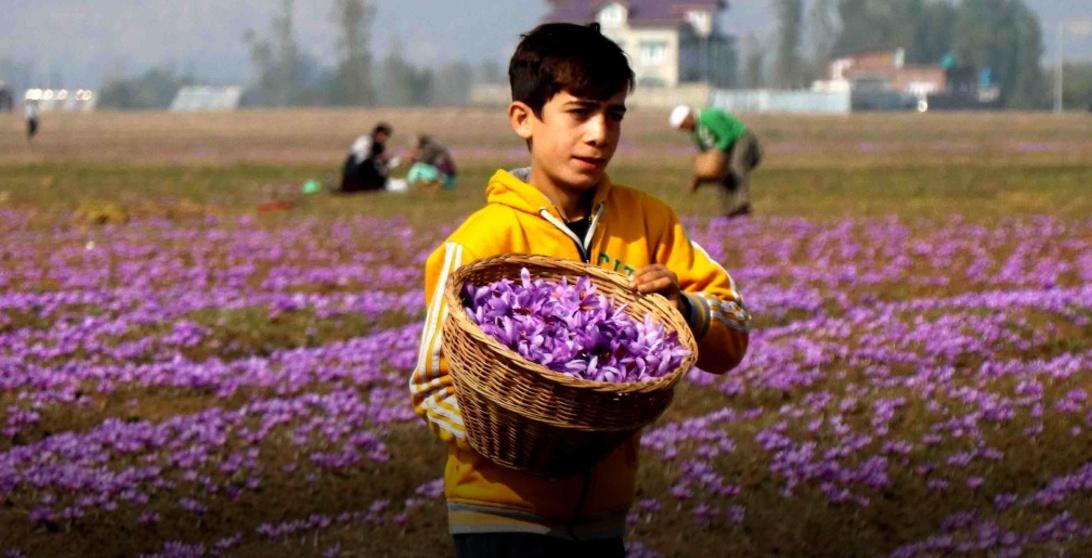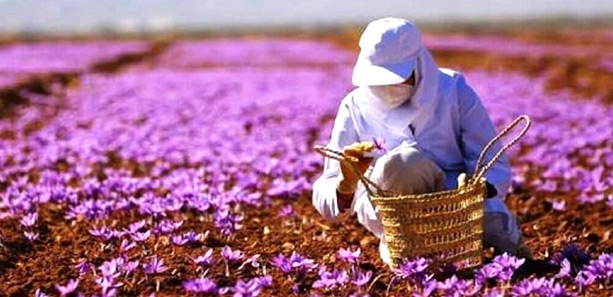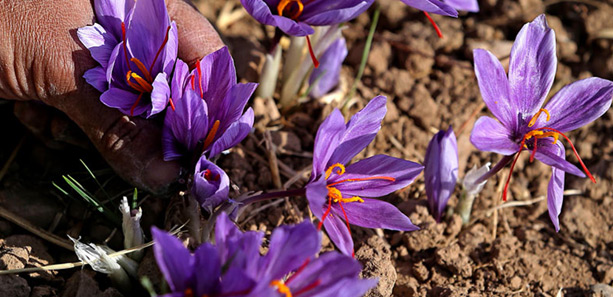ABOUT SAFFRON
What is Saffron
Saffron, a small, bulbous, perennial spice, is a member of the lily family and is highly prized for its unique flavor and vibrant color. Derived from the Crocus sativus flower, also known as the “saffron crocus,” the vivid crimson stigma and golden threads are meticulously hand-picked and sun-dried from the beautiful purple flowers.
To cultivate this precious spice, saffron is carefully planted by laying its roots under the soil. With each planting cycle lasting for 5 years, optimal blooming occurs in the second through fourth years, after which the quantity of flowers gradually diminishes. The old roots must be replaced with new ones for another 5 years to maintain the highest quality and yield.
Saffron flourishes in a climate of cold, frozen winters and very dry summers, providing the ideal growing conditions for this delicate and exquisite spice.
Saffron Types
Negin, Sargol, and Poshal are three different grades of saffron based on the way they are processed and the parts of the saffron crocus flower that are used.
- Negin: Negin saffron is a premium variety that is longer and thicker than other varieties. It has a dark red color and contains no yellow or white parts. Negin saffron is highly valued for its strong aroma, flavor, and coloring properties.
- Sargol: Sargol saffron is made up of only the red stigmas of the saffron crocus flower. The yellow style and other parts of the flower are removed, leaving behind only the valuable stigmas. Sargol saffron has a deep red color and a strong, pungent aroma.
- Poshal: Poshal saffron contains the whole stigma, including the yellow style, which gives it a slightly lighter color than Sargol saffron. Poshal saffron is known for its sweet taste and strong aroma.
Climate and Saffron Harvest
The saffron crocus, which cannot be found in the wild, is believed to have originated from Crocus Cartwrightianus. This plant is a triploid and is “self-incompatible” and male sterile. As a result, it is not capable of reproducing independently through sexual means, and all propagation must be done through vegetative multiplication using a starter clone or through interspecific hybridization. This involves manual “divide-and-set” methods.
Climate
The northeastern region of Iran boasts a native climate that is particularly conducive to the production of high-quality saffron. In fact, saffron produced in this region is widely regarded as some of the finest in the world. For generations, many farmers in this area have made saffron their primary crop, passed down as a heritage farming tradition.
The Crocus sativus plant flourishes in Mediterranean maquis, an ecotype that bears a superficial resemblance to the North American chaparral, as well as similar climates characterized by hot and dry summer winds that sweep semi-arid lands. Although the plant can survive cold winters and tolerate frost as low as −10 °C and short periods of snow cover, irrigation is necessary when grown outside of moist environments such as Kashmir, where annual rainfall averages 1,000–1,500 mm. Compared to the main cultivating regions in Iran, saffron-growing areas in Greece (500 mm) and Spain (400 mm) experience far drier conditions.
The optimal timing of local wet seasons is a key factor in facilitating successful saffron cultivation. Specifically, the combination of abundant spring rains followed by drier summers creates an ideal environment for saffron growth. Rainfall that occurs immediately prior to the flowering period can significantly enhance saffron yields, while inclement weather during this stage can lead to disease and reduced yields.
However, persistently damp and hot weather conditions can prove detrimental to saffron crops. Additionally, the presence of animals such as rabbits, rats, and birds can cause damage to corms by digging them up. Other threats to saffron cultivation include nematodes, leaf rusts, and corm rot. To mitigate some of these risks, growers may choose to inoculate with Bacillus subtilis, which has been shown to accelerate corm growth and increase stigma biomass yield.



